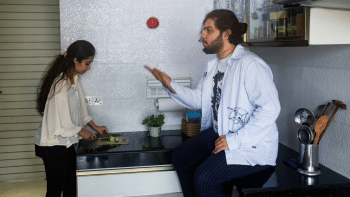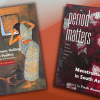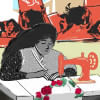The growing complexities of a working woman's life

I recently came across a comic strip by Vox discussing how women's happiness has declined over the years in contrast to their gain in rights and financial independence. The article in question spoke about American women but the situation could easily apply to the women of Bangladesh.
Since our independence in 1971, women have gained more opportunities in education as well as an increase in economic and political participation. In urban areas, an increasing number of female graduates began entering formal job sectors, as stated in a World Bank report from 2008. This clearly indicates an upward trend in financial independence and inclusion in the public sphere for women.
So, why would there be decreasing levels of happiness in women's lives? Well, what these statistics fail to take into account is how the patriarchal, patrilineal, and patrilocal aspects of our society have remained more or less the same over the passing decades combined with the added responsibility of navigating the public sphere. Regardless of the increased enrolment of girls at the primary and secondary levels, the situation is still dire for the tertiary level and beyond. Starting from their education to their careers, the shackles that have held women back for decades have more or less remained the same, adding a whole new layer of complication to their lives.
If we start with the basics, the gender pay gap is still nowhere near to being closed. According to the 2021 Global Gender Gap Report by the World Economic Forum, there is a gap of 88 percent between men and women in managerial positions in Bangladesh. Given how the system operates, a woman entering the professional world has a lower chance of getting hired in managerial positions. This can ultimately rob women of the opportunities to get promotions, raises, or adequate compensation.
If we go back to the statistics regarding tertiary education, the lower enrolment rates and higher dropouts also suggest that there would be lower percentages of women entering the professional world. This aligns with a 2021 report by the World Bank, which states that women's participation in the labour force accounts for 30.4 percent. As a result, a lot of new recruits entering a workplace might be in an environment with an appalling man-to-woman ratio. The skewed ratio, along with dissatisfactory pay, can easily lead to lower morale within the female workforce. I have personally sat through various meetings with a 10:1 man-to-woman ratio and it has made me wonder if the men in the room ever notice this massive gender disparity.
Fewer number of women in workplaces can also mean they are deprived of the opportunity to form strong workplace bonds or find confidants. In the unluckiest of circumstances, this results in higher workplace harassment and violence by peers of the opposite gender. A 2020 study by Raj A et al. showed that gender parity in workplaces can help reduce risks of workplace harassment.
But harassment does not end at the workplace. The experience of commuting to-and-fro workplaces vary massively for a man and a woman, especially for the ones having to use public transport. Passing through the leers, jeers, and unwanted gropes of men every single day is nothing short of a battle.
When women finally get home from work, they are still expected to assume the role of the primary caretaker of the household and the children. It can feel as though nothing much has changed from previous generations, and women are more or less living the same life as their mothers and grandmothers. If their partner does decide to help out here and there, the burden of managing the entire household still falls on the woman. But, now there is the added burden of having to contribute financially as well. The unequal share of household chores not only goes on to affect workplace performance, thereby hampering further promotions, but also naturally leads to dissatisfaction and unhappiness for the woman.
The inherent inequality present in the structure of marriage affects the lives of women both inside and outside the workplace. Women are still expected to settle in with their in-laws after marriage, leaving behind their own homes. This usually means uprooting their entire life and moving to a different location which, in a lot of cases, might mean leaving their previous job due to issues with commuting.
Uprooting your life and moving in with your in-laws might have made sense in a society where women were financially dependent on their partners. In today's society, not so much. Settling in a whole new environment can be unnerving a lot of the time and in many cases, such arrangements can also curb a woman's freedom and limit their agency, leading to discontent.
This generation has seen the biggest upsurge of women joining the workforce. All of the aforementioned complexities are something our generation of working women will be dealing with to an extent never faced before. In the past, a lot of women had accepted the fact that their life is just bound to be difficult, but our generation is unwilling to settle for that. As women today look straight into the eyes of such injustice and growing complexities murking up our work-life balance, it's easy to understand how a woman of today might be seemingly far less happy.
References:
1. Vox (November 2019) Women are increasingly unhappy. This comic explains why
2. World Bank (2008) From Whispers to Voices: Gender and Social Transformation in Bangladesh
3. The Daily Star (June 2022) Girls' enrolment keeps dropping at colleges, universities
4. World Economic Forum (2021) Global Gender Gap Report
5. World Bank (October 2022) Labor force, female (% of total labor force)
6. Raj A, Johns NE, Jose R. (March 2020) Gender Parity at Work and Its Association With Workplace Sexual Harassment. Workplace Health & Safety
Tasnim Odrika has only one personality trait and that is cats. Share ideas for new personality traits with her at [email protected]

 For all latest news, follow The Daily Star's Google News channel.
For all latest news, follow The Daily Star's Google News channel. 









Comments